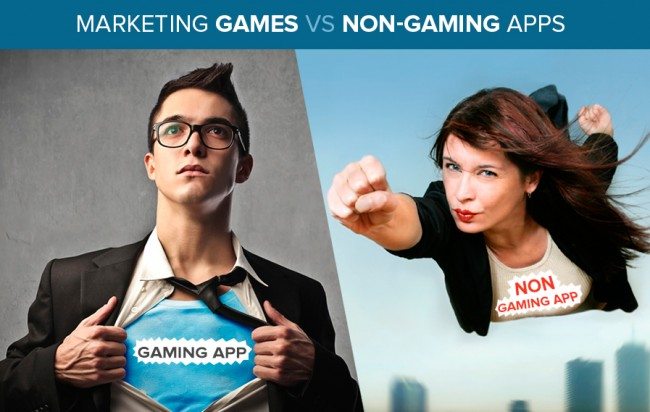Tim McCloud was formerly Director of Global Mobile Marketing for PlayKids by Movile. His background in mobile game marketing gives him a unique point-of-view in marketing a subscription-based app and building trust between the parents and children who are the ultimate end-users of the product.
Learn more about Mobile Hero Tim.
There’s a world of difference in marketing a gaming app vs. anything else, but just how different are they? And what are the most important things for marketers of either industry to keep in mind to be successful?
I’ve had the unique opportunity to work in user acquisition and growth marketing for gaming apps for six years (at Kabam, EA, Playstudios, and Big Fish) as well as this past year in non-gaming for Connect, a location-based social app and PlayKids, an entertainment app for kids ages 3-5. Combined, the experience puts me in a great position to answer those questions.
The biggest differences between marketing the two kinds of apps lie in the behavior of the users. Take these two user profiles and see if you can guess whether they fit a game marketer’s target or a non-gamer marketer’s target.
Profile #1
- In-app purchases are based on impulse/necessity to continue using the app
- App usage driven by frequent re-engagement from the publisher
- Engages with an app frequently right after download, but cools off after a week or two
Profile #2
- In-app purchases are based on a long-term ongoing need/desire to consume content or use a service
- App usage is regular, but users expect regular updates to the service
- Engagement is more dependent on a well-tailored experience
The answer?
Profile #1 exhibits the behavior of a gaming app user, while Profile #2 portrays a non-gaming app user.
The key differences in marketing a gaming app versus a non-gaming app lie in three factors: The audience, the channels, and the message.
Audience
When marketing a gaming app, your audience is broad, and it’s not just the younger generation playing games. In fact, adults age 35-44 spend the most on mobile games, averaging $6 per person, per month.
Non-gaming app audiences tend to be more niche. While nearly anyone could be interested in a game to help kill time on a workday commute, the folks interested in spending money on an education app for their children are much more niche and will require very specific targeting to find them.
Channels
As with audience, mobile gaming marketers have a bigger pool of channels to utilize in promoting their product. Platforms like Facebook and Twitter make it easy to find pools of users that fit a marketer’s demographic, and there’s no shortage of publications and RTB exchanges they can work with to drive installs and engagement.
With non-gaming apps, marketers have to be really picky about where they spend money. Facebook is still a great resource for finding users, but diversifying user acquisition channels is key. It’s important to work with partners like Liftoff who will help marketers find users across a variety of channels and will be happy to pay for the service or subscription.
Beyond that, savvy marketers partner with companies that will go beyond a cost per install (CPI) basis and drive actions like registrations, purchases or subscriptions. Those partners are highly incentivized to help grow an app’s user base, not just the number of potentially meaningless installs.
Message
When marketing a game, it’s safe to assume that a publisher has at least 10 competitors trying to acquire the same audience, so the messaging revolves around making the app stand out from the rest. When it comes to re-engagement, messaging focused on instant gratification will find more success. A bonus offering free coins or extra lives is immediately useful, and gets users back into the game. It might help them beat a level they couldn’t before, which caused their inactivity in the first place. More importantly, it helps them realize the benefit of a bonus they’ll only have to pay a small fee to receive going forward.
Non-gaming app messaging is a completely different animal. Marketers are promoting an ever-evolving app that people will use for a long time and will continue to engage with, months and years down the line. The messaging is often more educational because the benefits need to be explained and digested by the target audience, allowing them to make a rationalized, informed decision. At PlayKids, the marketing message focuses on helping parents understand the educational benefits their child will get by using the app, why they can trust PlayKids, then selling them on a subscription model. The trust factor is huge, parents need to know their children aren’t being brainwashed by an app.
Defining Success
The metrics or KPIs your particular app may depend upon for success will vary from app to app, but the constant (in marketing a game or anything else) should be narrowly focusing on what those KPIs are and optimizing marketing efforts to achieve the desired action. For example, say an app’s success depends on subscribed users and it’s testing two acquisition campaigns, spending equally on each test.
- Test 1 is driving tons of inexpensive installs, but very few subscriptions.
- Test 2 is driving much fewer app installs, but installs are converting to subscribers at a much higher rate, and cheaper than test 1.
Which campaign is more valuable? Test 2. Installs are nice, subscriptions keep the business running, so spending needs to be focused there.
In the end, all marketers of any app really want are quality users. The way to get them will change from app to app, but narrowly defining your audience, testing available channels, nailing down the messaging, and working with partners who know how to find ideal users at a cost-effective price are strategies that work regardless of what you’re marketing.
